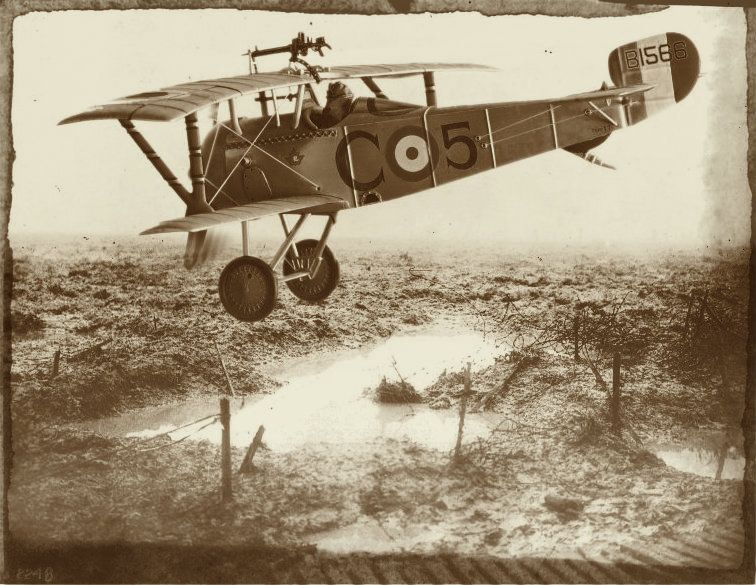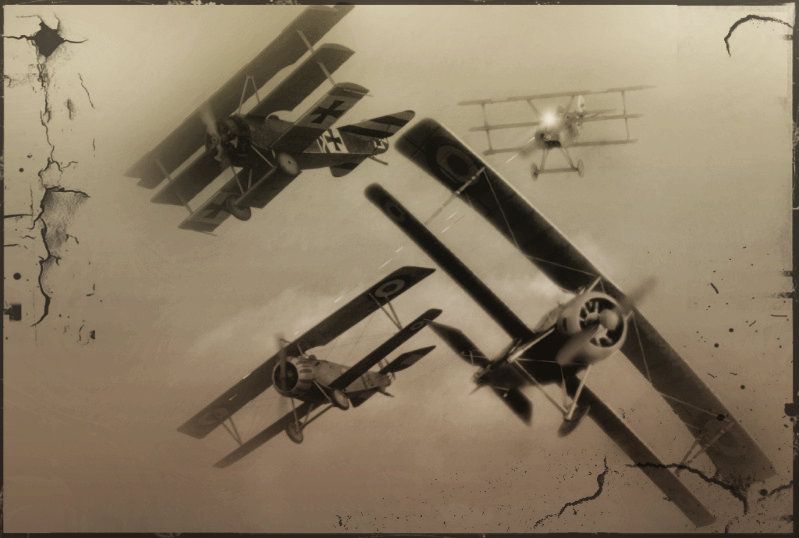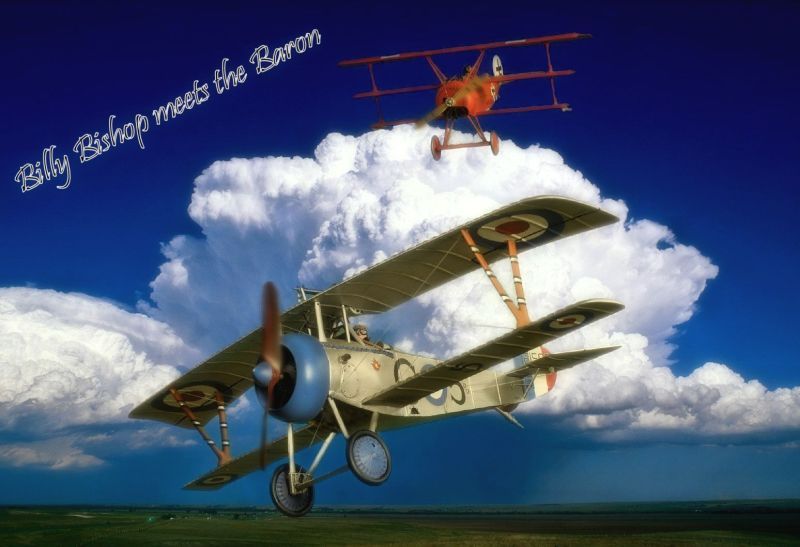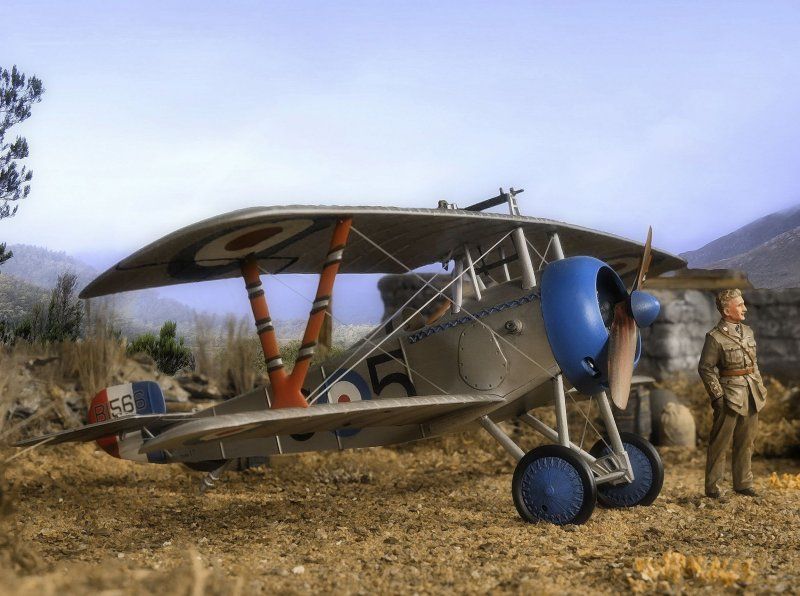Firebat
2nd Lieutenant
- Joined
- Apr 6, 2006
- Messages
- 3,348
BILLY BISHOP
In November 1916 after receiving his wings Bishop was attached to No. 37 Squadron RFC at Sutton's Farm, Essex flying the BE.2c. Bishop disliked the flying at night over London, searching for German airships, and he soon requested a transfer to France.
On 17 March 1917, Bishop arrived at 60 Squadron at Filescamp Farm near Arras, where he flew the Nieuport 17 fighter. At that time, the average life expectancy of a new pilot in that sector was 11 days, and German aces were shooting down British aircraft 5 to 1. Bishop's first patrol on 22 March was less than successful. He had trouble controlling his run-down aircraft, was nearly shot down by anti-aircraft fire, and became separated from his group. On 24 March, after crash landing his aircraft during a practice flight in front of General John Higgins, Bishop was ordered to return to flight school at Upavon. But before he could leave, Major Alan Scott, new commander of 60 Squadron, convinced Higgins to let him stay until a replacement arrived. The next day Bishop claimed his first victory when his was one of four Nieuports that engaged three Albatros D.III Scouts near St Leger. Bishop shot down and mortally wounded a Leutnant Theiller, (although Shores (1991) has 12-kill ace Theiller as being killed vs 70 Squadron Sopwiths on 24 March; therefore this claim does not match with known losses) but his engine failed in the process. He landed in No Man's Land 300 yards from the German front line. After running to the Allied trenches, Bishop spent the night on the ground in a rainstorm. There Bishop wrote a letter home, starting:"I am writing this from a dugout 300 yards from our front line, after the most exciting adventure of my life." General Higgins personally congratulated Bishop, and rescinded his order to return to flight school. On 30 March 1917 Bishop was named a flight commander. The next day he scored his second victory. Bishop, in addition to the usual patrols with his squadron comrades, soon flew many unofficial "lone-wolf" missions deep into enemy territory, with the blessing of Major Scott. As a result, his total of enemy aircraft shot down increased rapidly. On 8 April he scored his fifth victory and became an ace. To celebrate, Bishop's mechanic painted the aircraft's nose blue, the mark of an ace. Former 60 Squadron member Captain Albert Ball, at that time the Empire's highest scoring ace, had had a red spinner fitted.
Bishop's no-hold-barred style of flying always had him "at the front of the pack," leading his pilots into battle over hostile territory. Bishop soon realized that this could eventually see him shot down; after one patrol, a mechanic counted 210 bullet holes in his aircraft. His new method of using the surprise attack proved successful; he claimed 12 aircraft in April alone, winning the Military Cross and a promotion to Captain for his participation at the Battle of Vimy Ridge. The successes of Bishop and his blue-nosed aircraft were noticed on the German side, and they began referring to him as "Hell's Handmaiden". Ernst Udet called him "the greatest English scouting ace" and one Jasta had a bounty on his head.
On 30 April, Bishop survived an encounter with Jasta 11 and Manfred von Richthofen, the Red Baron. In May, Bishop won the Distinguished Service Order for shooting down two aircraft while being attacked by four others.
On 2 June 1917, Bishop flew a solo mission behind enemy lines to attack a German-held aerodrome, where he claimed that he shot down three aircraft that were taking off to attack him and destroyed several more on the ground. For this feat, he was awarded the Victoria Cross (VC), although it has been suggested that he may have embellished his success. His VC was one of two awarded in violation of the warrant requiring witnesses (the other being the Unknown Soldier), and since the German records have been lost and the archived papers relating to the VC were lost as well, there is no way of confirming whether there were any witnesses. It seemed to be common practice at this time to allow Bishop to claim victories without requiring confirmation or verification from other witnesses.
In July, 60 Squadron received new Royal Aircraft Factory S.E.5s, a faster more powerful aircraft with better pilot visibility. In August 1917 Bishop passed the late Albert Ball in victories to become (temporarily) the highest scoring ace in the RFC and the third top ace of WW1, second only to René Fonck and third to the Red Baron. Soon after he was informed he had won the Victoria Cross for his June attack on the German aerodrome.
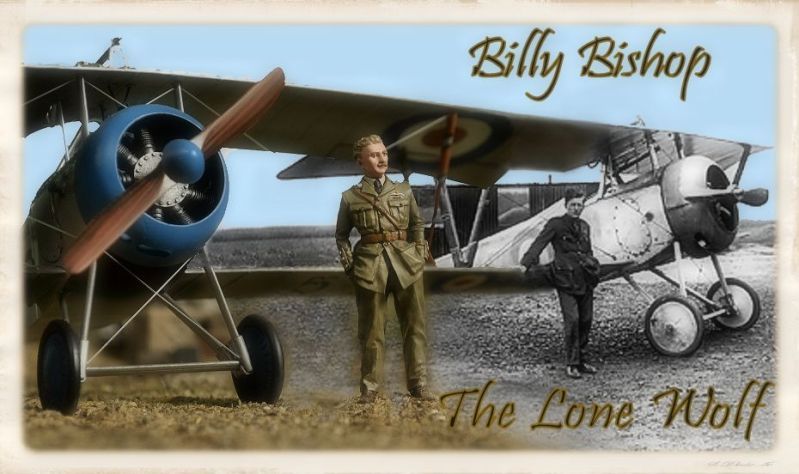
In November 1916 after receiving his wings Bishop was attached to No. 37 Squadron RFC at Sutton's Farm, Essex flying the BE.2c. Bishop disliked the flying at night over London, searching for German airships, and he soon requested a transfer to France.
On 17 March 1917, Bishop arrived at 60 Squadron at Filescamp Farm near Arras, where he flew the Nieuport 17 fighter. At that time, the average life expectancy of a new pilot in that sector was 11 days, and German aces were shooting down British aircraft 5 to 1. Bishop's first patrol on 22 March was less than successful. He had trouble controlling his run-down aircraft, was nearly shot down by anti-aircraft fire, and became separated from his group. On 24 March, after crash landing his aircraft during a practice flight in front of General John Higgins, Bishop was ordered to return to flight school at Upavon. But before he could leave, Major Alan Scott, new commander of 60 Squadron, convinced Higgins to let him stay until a replacement arrived. The next day Bishop claimed his first victory when his was one of four Nieuports that engaged three Albatros D.III Scouts near St Leger. Bishop shot down and mortally wounded a Leutnant Theiller, (although Shores (1991) has 12-kill ace Theiller as being killed vs 70 Squadron Sopwiths on 24 March; therefore this claim does not match with known losses) but his engine failed in the process. He landed in No Man's Land 300 yards from the German front line. After running to the Allied trenches, Bishop spent the night on the ground in a rainstorm. There Bishop wrote a letter home, starting:"I am writing this from a dugout 300 yards from our front line, after the most exciting adventure of my life." General Higgins personally congratulated Bishop, and rescinded his order to return to flight school. On 30 March 1917 Bishop was named a flight commander. The next day he scored his second victory. Bishop, in addition to the usual patrols with his squadron comrades, soon flew many unofficial "lone-wolf" missions deep into enemy territory, with the blessing of Major Scott. As a result, his total of enemy aircraft shot down increased rapidly. On 8 April he scored his fifth victory and became an ace. To celebrate, Bishop's mechanic painted the aircraft's nose blue, the mark of an ace. Former 60 Squadron member Captain Albert Ball, at that time the Empire's highest scoring ace, had had a red spinner fitted.
Bishop's no-hold-barred style of flying always had him "at the front of the pack," leading his pilots into battle over hostile territory. Bishop soon realized that this could eventually see him shot down; after one patrol, a mechanic counted 210 bullet holes in his aircraft. His new method of using the surprise attack proved successful; he claimed 12 aircraft in April alone, winning the Military Cross and a promotion to Captain for his participation at the Battle of Vimy Ridge. The successes of Bishop and his blue-nosed aircraft were noticed on the German side, and they began referring to him as "Hell's Handmaiden". Ernst Udet called him "the greatest English scouting ace" and one Jasta had a bounty on his head.
On 30 April, Bishop survived an encounter with Jasta 11 and Manfred von Richthofen, the Red Baron. In May, Bishop won the Distinguished Service Order for shooting down two aircraft while being attacked by four others.
On 2 June 1917, Bishop flew a solo mission behind enemy lines to attack a German-held aerodrome, where he claimed that he shot down three aircraft that were taking off to attack him and destroyed several more on the ground. For this feat, he was awarded the Victoria Cross (VC), although it has been suggested that he may have embellished his success. His VC was one of two awarded in violation of the warrant requiring witnesses (the other being the Unknown Soldier), and since the German records have been lost and the archived papers relating to the VC were lost as well, there is no way of confirming whether there were any witnesses. It seemed to be common practice at this time to allow Bishop to claim victories without requiring confirmation or verification from other witnesses.
In July, 60 Squadron received new Royal Aircraft Factory S.E.5s, a faster more powerful aircraft with better pilot visibility. In August 1917 Bishop passed the late Albert Ball in victories to become (temporarily) the highest scoring ace in the RFC and the third top ace of WW1, second only to René Fonck and third to the Red Baron. Soon after he was informed he had won the Victoria Cross for his June attack on the German aerodrome.

Last edited:


